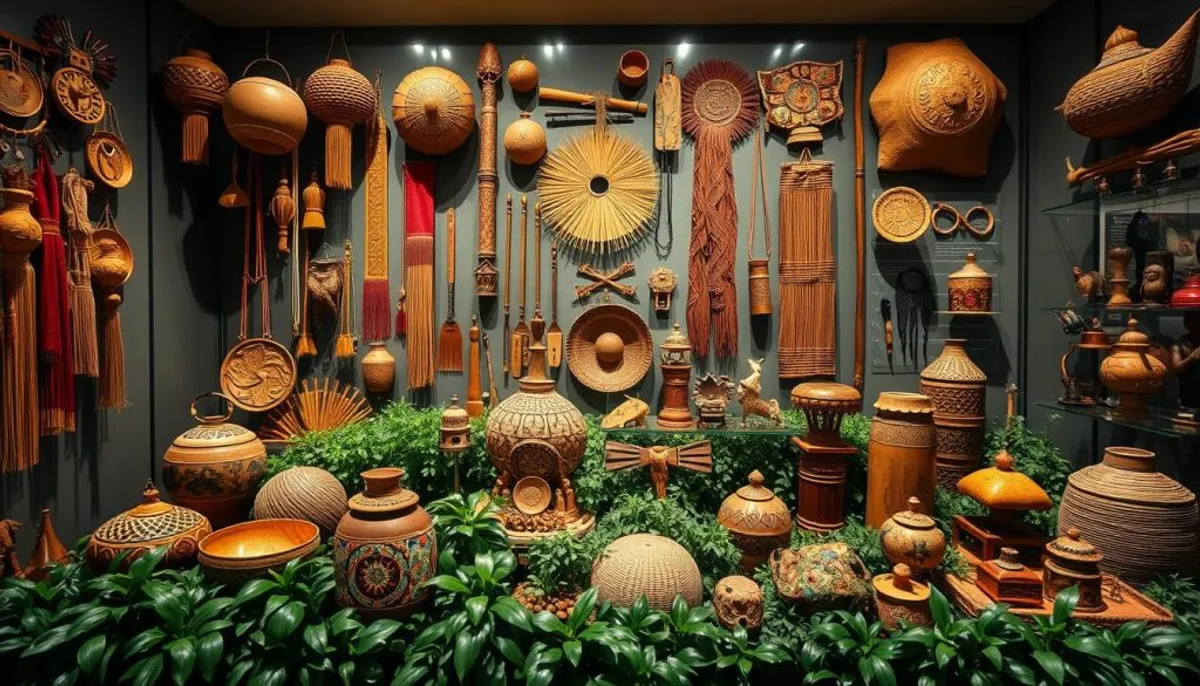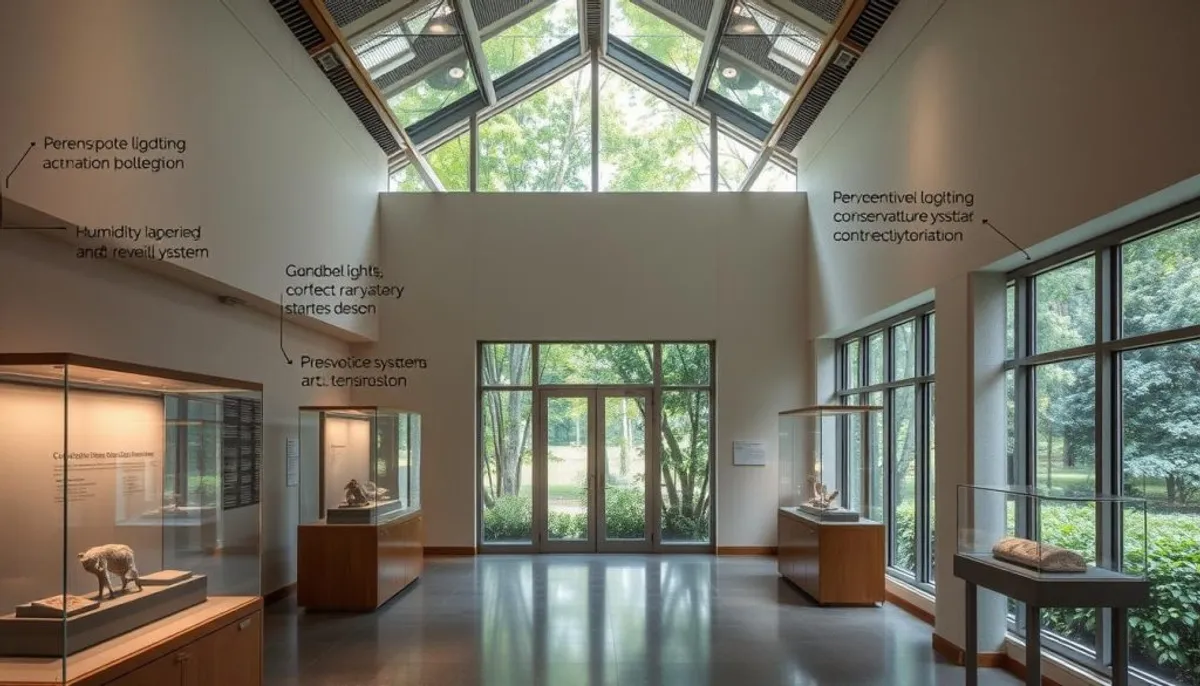The cultural heritage evokes a deep fascination. Cultural objects, emblems of our heritage, attract growing attention. This guide aims to unveil their essence, their historical value, and the challenges of their preservation.
A cultural object is characterized by its archaeological, artistic, or historical value. It can be a work of art, a museum artifact, or a natural element rooted in our culture. These treasures reflect our collective memory, demanding dedicated attention.

The protection of these treasures is paramount. They face challenges such as reproduction, transfer, or looting. Their preservation requires relentless work to ensure their survival for future generations.
This guide explores the various facets of cultural objects. We will examine their definition, their importance, and protection strategies. Together, let’s discover the significance of these artifacts in our culture and our history.
What is a cultural object: definition and fundamental characteristics
A cultural object is the embodiment of a community's collective identity. It plays an essential role in the formation and maintenance of that identity. These objects, whether material or immaterial, serve as guardians of the heritage and vectors of cultural transmission.
Qualification criteria for a cultural object
To be classified as cultural, an object must meet specific criteria. It must be representative of a community, reflect its traditions, and enrich cultural diversity. UNESCO emphasizes the importance of intangible heritage, which includes practices, representations, and know-how passed down from generation to generation.
Archaeological, artistic, and historical values
Cultural objects often possess archaeological, artistic, or historical value. They testify to the evolution of societies and their achievements. For example, an ancient text can reveal information about past ways of life. A work of art can illustrate the aesthetic trends of a period.
Material and immaterial dimensions
The cultural heritage encompasses more than tangible objects. It also includes immaterial elements such as oral traditions, performing arts, and rituals. These intangible aspects are crucial for preserving cultural diversity and the transmission of knowledge.
Whether it is a historical monument, a traditional dance, or a craft skill, each cultural object contributes to our common heritage. Their protection and enhancement are vital to ensuring the sustainability of our cultural diversity.
The legal protection of cultural objects
The protection of cultural objects relies on a complex legal framework. The heritage law and copyright play a central role. These laws define the criteria for safeguarding and frame the responsibilities of owners.
National and international legislative framework
At the international level, the 1954 Hague Convention is a major pillar. It aims to protect cultural property in the event of armed conflict. Its additional protocols from 1977 and 1999 have strengthened this framework. UNESCO ensures the implementation of these legal instruments.

Rights and obligations of owners
Owners of cultural objects have rights but also duties. They must ensure the conservation of these valuable items. The heritage law imposes restrictions on their use and circulation. The export of cultural property is subject to strict controls to prevent illicit trafficking.
Conservation and preservation mechanisms
Concrete measures are implemented to preserve the heritage. These include grants for restoration, educational programs, and the involvement of local communities. Cultural policies aim to enhance these properties while ensuring their sustainability for future generations.
The different categories of cultural objects
The classification of cultural property covers a wide variety, from works of art to archaeological objects. This diversity illustrates the richness of human heritage, highlighting the challenges related to their categorization.
Cultural objects can be divided into several categories:
- Works of art (paintings, sculptures, installations)
- Archaeological objects (artifacts, remains)
- Historical documents (manuscripts, archives)
- Intangible heritage (oral traditions, know-how)
The diversity of cultural objects is remarkable. They can be physical, like an ancient statue, or immaterial, like a traditional dance. Their cultural value influences their categorization and legal protection. Cultural activities also play an important role in enhancing these objects.
| Category | Examples | Protection |
|---|---|---|
| Works of art | Paintings, sculptures | Museums, galleries |
| Archaeological objects | Pots, prehistoric tools | Excavation sites, reserves |
| Intangible heritage | Folk dances, traditional recipes | Oral transmission, documentation |
The categorization of cultural property evolves over time. New categories emerge to reflect societal and technological transformations. For instance, digital art and ephemeral performances pose unique challenges for their preservation and categorization.
The role of cultural institutions in preservation
Cultural institutions are crucial for the preservation of our heritage. They are responsible for preventive conservation, restoration, and cultural mediation. These actions help preserve the objects that tell our story.
Museums as guardians of heritage
Museums are at the heart of protecting our cultural heritage. They employ advanced methods of preventive conservation to keep works of art and historical artifacts in good condition. Careful restoration is essential to repair damage caused by time. Additionally, they organize cultural mediation activities to raise public awareness of the importance of our heritage.

Libraries and archives
Libraries and archives are responsible for the conservation of our written memory. They digitize fragile documents to ensure their durability. Restoration experts work on ancient manuscripts. These institutions offer exhibitions and lectures to raise public awareness of this heritage.
Specialized conservation centers
Dedicated centers focus on specific cultural objects, including traditional customs. They conduct in-depth research in preventive conservation and restoration. Their expertise allows for the preservation of unique pieces, such as ancient textiles or contemporary works.
| Institution | Main role | Key activities |
|---|---|---|
| Museums | Guardians of heritage | Preventive conservation, restoration, exhibitions |
| Libraries | Preservation of written works | Digitization, manuscript restoration |
| Specialized centers | Targeted expertise | Research in conservation, specialized restoration |
The social and historical importance of cultural objects
Cultural objects are essential in our society. They shape our cultural identity and strengthen social cohesion. These treasures of the past and present serve as guardians of our collective memory. They transmit knowledge from one generation to the next.
Transmission of knowledge between generations
Cultural objects serve as a bridge between the past and the present. They enable the transmission of traditions, know-how, and values. This cultural continuity reinforces the sense of belonging and identity within communities.
Construction of collective identity
Cultural identity is forged through these objects. They tell our story, our struggles, and our successes. Each artifact, each tradition contributes to the construction of a unique and shared collective identity.
Intercultural dialogue and diversity
Cultural objects promote dialogue between cultures, including Haitian culture. They help us understand and appreciate diversity. In a globalized world, they are essential for maintaining the richness of our cultural heritage.
| Aspect | Impact on society |
|---|---|
| Transmission of knowledge | Preservation of traditions and skills |
| Collective identity | Strengthening the sense of belonging |
| Intercultural dialogue | Promotion of mutual understanding |
| Social cohesion | Creating bonds among community members |
Cultural objects are much more than mere artifacts. They are the pillars of our collective memory, the engines of our social cohesion, and the guardians of our cultural diversity. Their preservation and enhancement are essential to maintaining the social and cultural fabric of our society.
The digitization of cultural objects
The digital preservation of cultural objects is becoming crucial in the face of destruction risks. In 2018, the fire at the National Museum of Rio destroyed 20 million pieces. This highlights the importance of preserving our digital heritage. 3D digitization offers a promising solution, creating faithful copies of objects and places in three dimensions.
Accessibility to works is improving thanks to technology. Google offered a virtual tour of the Rio museum via Street View after the fire. Companies like Iconem and Art Graphique & Patrimoine are involved in safeguarding threatened sites in the Middle East by scanning them in 3D.
In France, the National Program for the Digitization and Enhancement of Cultural Content (PNV) supports the digitization of heritage. It concerns various types of content: archives, films, photos, books, movable objects. The PNV aims to make these resources accessible to the greatest number, thereby promoting the dissemination of our cultural heritage.
Digitization not only helps prevent the deterioration of works but also opens new possibilities for studying and enhancing heritage. It represents a major challenge for the conservation and transmission of our collective history to future generations.
Conclusion
The preservation of cultural heritage represents a fundamental challenge for our society. Cultural objects, both material and spiritual, are essential for transmitting our history and identity. The acquisition of "The Flight into Egypt" by the Lyon Museum of Fine Arts in 2007 highlights the importance of safeguarding these treasures.
Cultural evolution transforms our perception and appreciation of these treasures. The training program of the Quebec School emphasizes the crucial role of education in the study of heritage. It aims to instill in students a deep understanding of their culture and history.
Future challenges for heritage preservation are numerous. The digitization of cultural works opens new avenues for dissemination but also raises questions about digital cultural consumption. Julien Gracq emphasized the importance of promoting active and thoughtful reception of culture, beyond mere passive consumption.
In summary, the protection and enhancement of our cultural heritage require constant adaptation to technological and societal advances. This collective challenge involves institutions, educators, and citizens in preserving our cultural heritage for future generations.
RelatedRelated articles


